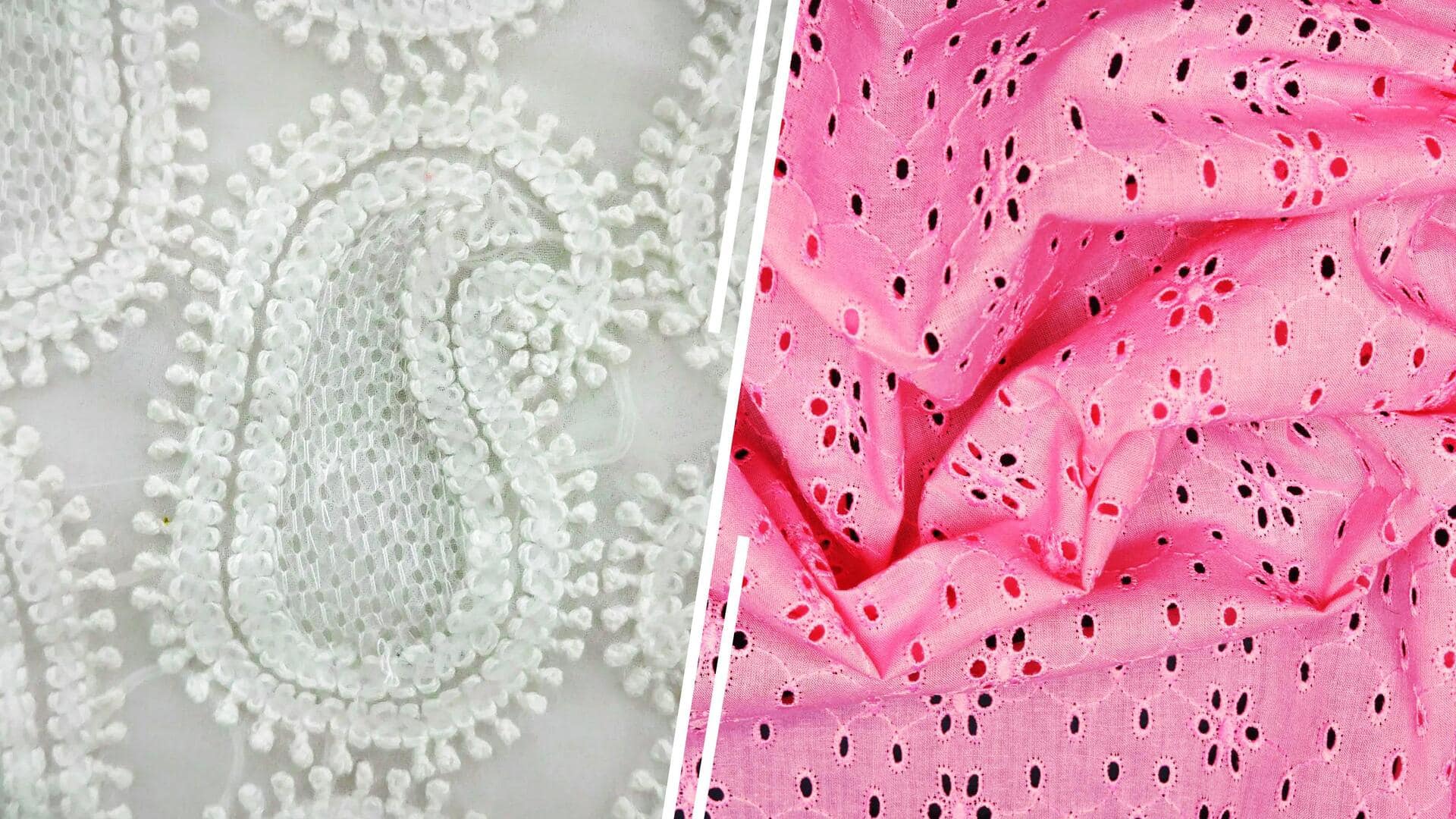
Exploring distinctive charms of chikankari and hakoba fabrics
What's the story
Both chikankari and hakoba textiles are intricate and detailed embroidery techniques, famous for their versatility. However, people often confuse between the two. Chikankari and hakoba are two distinct embroidery and fabric styles with different origins, techniques, fabric choices, color schemes, and design aesthetics. Here are the key differences between chikankari and hakoba fabric to help you identify them before making your purchase.
Origin
Origin in different regions
Chikankari, with its origins in Lucknow, Uttar Pradesh, boasts a rich history dating back to the Mughal era. Conversely, hakoba fabric isn't limited to a single Indian region. It represents a widespread embroidery and fabric style cherished throughout the country. Interestingly, the term "Hakoba" shares its name with the Japanese word for a checkerboard or plaid pattern.
Technique
Embroidery technique
Chikankari is characterized by delicate, intricate white-on-white embroidery, often done on lightweight fabrics like muslin or chiffon. It involves various stitches, including shadow work, jaali, murri, and phanda stitches, creating floral and paisley motifs. In contrast, Hakoba embroidery leans towards geometric and repetitive designs. It embraces eyelet or cutwork, forming small fabric holes embellished with colorful threads that stand out against the base fabric.
Fabric
Type of fabric used
Chikankari embroidery is primarily done on sheer and lightweight fabrics, such as muslin, chiffon, organza, or cotton. The focus is on creating a subtle and elegant look. Hakoba can be applied to a variety of fabrics, including cotton, linen, and synthetic blends. It is not limited to lightweight materials and can also be used on sturdier fabrics for a more versatile range of clothing.
Design
Design aesthetic
Chikankari emphasizes intricate handmade motifs and fine detailing, creating an elegant and timeless appearance. In contrast, hakoba embroidery is machine-made, featuring vibrant colors and bold, casual geometric patterns. Chikankari attire is preferred for formal and semi-formal occasions like weddings and parties, exuding a traditional and sophisticated charm. Hakoba fabric, on the other hand, finds its place in both everyday casual wear and semi-formal attire.
Color
Colos aspect
Traditional chikankari embroidery predominantly employs white thread on white or light-colored fabrics, though modern versions may introduce colored threads and diverse fabrics. On the other hand, hakoba embroidery is known for its colorful threads, allowing for a wide array of color choices and creative experimentation. This color versatility distinguishes hakoba from the more conventional and monochromatic chikankari embroidery.